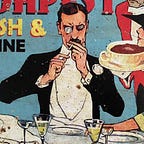Understanding the GameStop Saga — Part Three: Popular Delusions and Madness
In part II, we looked to understand what a short-squeeze is, its mechanisms and effects. This was essential to understand what happened to GameStop stock as it raced violently up and down, the drivers and repercussions of such a move.
Here, we will zoom out to review the worst financial recession since the Great Depression.
PART III: Popular Delusions and Madness
It’s the 1980’s! The Soviet Union is collapsing leaving the USA as the singular superpower with no expensive wars to fight. This ushered a new era of solid economic expansion most apparent during Bill Clinton’s presidency through the turn of the century: strong economic growth and solid job creation; low inflation and interest rates; a fiscal surplus (1998–2001) for the first time since 1969 and falling national debt. Free and growing international trade was in full swing (NAFTA, elimination of tariffs and free trade agreements notably with China.) Multinational companies made record profits with better, faster, cheaper products. Technological advances and deregulation made both Silicon Value and Wall Street the innovation hubs and hottest job markets attracting theoretical physicists, engineering PhD’s, whizz kids, divas, and con artists from around the world.
Alan Greenspan, the chairman of the Federal Reserve (1987–2006) was hailed as one of the architects of this prosperous and stable period. Nicknamed the Maestro, he masterfully used his toolbox (Fed rates and cryptic messages) to stimulate the economy, keep inflation in check and contain bubbles and external shocks. He moved markets and commanded influence and respect from Washington, Wall Street and around the world even after the end of his mandate in 2006.
It was the best of times. It was the worst of times.
Less than two years later, and the Maestro of yesteryear has been blamed for the worst economic shock since the Great Depression of 1930’s. The Great Financial Recession that started in 2007 shook the American economy to its core and brought the world to a standstill. To be sure, the seeds of the recession were sown long before.
In combination with other longer-term trends like automation, the push for globalization enabled the outsourcing of manufacturing which gutted good paying middle-class jobs to transform America into a predominantly service- and consumption-based, debt-driven economy. Globalization and automation also helped mask the inevitable inflation (subsidized by low wages and poor working conditions oversees) that would have resulted from accommodative monetary and fiscal policies. The US ran large deficits to finance the post-9/11 twin wars and stimulate a slowing economy. Bush administration’s push to sell the increasingly out-of-reach homeownership dream and debt-fueled consumption binge to more people, led to the rise of risky subprime and lax lending. Alan Greenspan’s Fed reduced its lending rates from 6.1% to 1% and kept them at historic lows for longer than experts think was warranted, fueling even more risk-taking and risky borrowing. Greenspan even personally advised homebuyers to take on even riskier forms mortgages just before the he started raising its lending rate. Deregulation, low interest rates and lax lending conditions, and over-reliance on Fed backstop made Wall Street more risk-blind and led to the rise of unregulated shadow banking system, toxic and poorly-understood financial instruments, more speculative bubble formation and misallocation of capital, and inevitably fraud. Vulnerabilities and dependencies built up and multiplied through the fabric of the global financial and economic network turning it into a house of card, built at the end of a domino chain, on a minefield.
It was the best of times. It was the worst of times. It was also the end of times.
Superlatives were made for this! Monday, September 15, 2008, in the middle of the night, Lehman Brothers — the 5th largest and a 150-year-old investment bank — became the largest bankruptcy in history. During the most memorable weekend in financial history and following days the government had to rescue the insurance giant AIG, force gunpoint marriages between banks that were deemed too-big-to-fail.
Interbank lending, the lubricant to financial system and commerce, froze due to a complete collapse in trust. International trade and shipping froze. The Federal Reserve, along with other central banks, then-unprecedented programs of forced lending, buying of toxic papers and bailouts. And after driving their lending rates towards 0, central banks embarked on an unprecedented balance sheet expansion buying up the toxic securities off the financial system. Apart from the moral hazard that these bailouts were sure to cause, not only are these programs still not reversed, 12 years later, but had to be expanded (the Fed is on its fourth round of quantitative easing and some countries are effectively in negative rate territory.)
Meanwhile, the same entities who made profits shuffling risky instruments on the way up went unpunished (no prosecutions or bonus clawbacks) on the way down, are the same beneficiaries of the policies implemented by governments and central banks. On the other hand, millions of families lost their homes and jobs in the process and were set years behind. And while the stock market recovered and is setting all time high, many families never did to this day.
This is often what happens when a large debt-fueled bubble pops.
In the following part, we will see how the financial crisis of 2007 and ensuing global recession exposed a deep-laying disconnects that were papered over by decades of easy money, debt, and wealth transfer.
